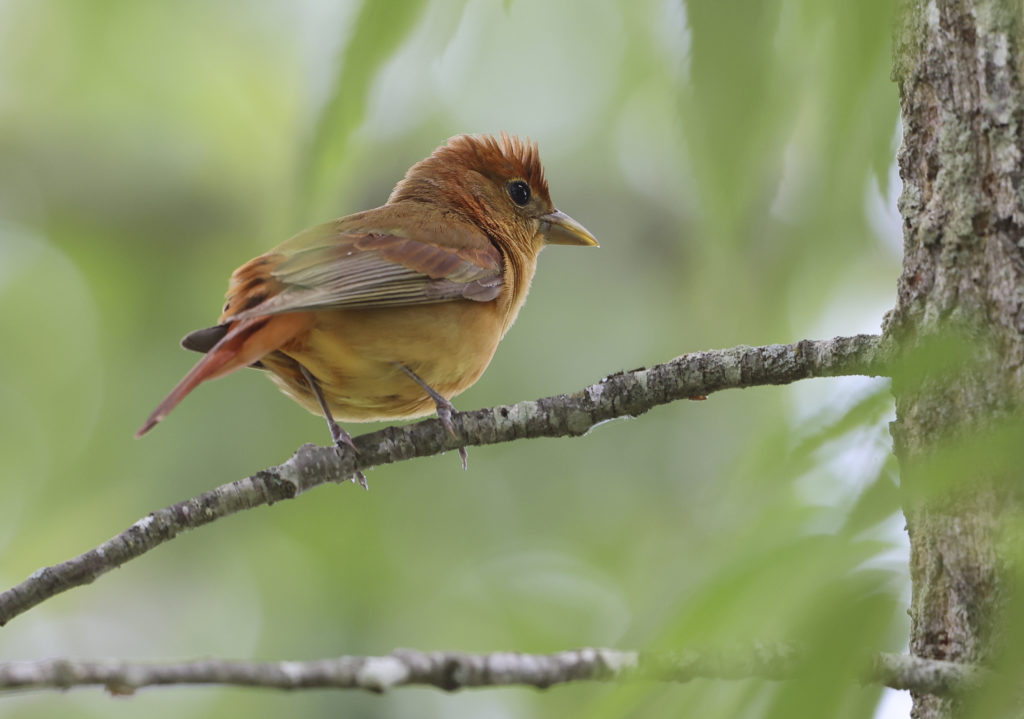Summer Tanagers: All Red for Summer


By Wayne Bierbaum
In 2007, I visited the Adkins Arboretum in Caroline County for the first time. It was in the middle of spring and I was impressed with the size of the trees and the variety of native flowering plants.
While walking in the dark woods, I heard a unique bird call that was loud and close. It was a pretty song, like “BeeeRrrrBeeBeeRrrBeee”. I stopped walking and stood quietly next to a tree, waiting for the source of the sound to show itself. An all-red bird with an awkwardly large dark yellow-orange bill landed on a low branch about 40 feet from me. It was a summer tanager. I got a photo—not a great one, but a photo of a beautiful, uncommon bird. It got me hooked on visiting different wildlife areas and getting a better camera system.
In the eastern U.S., summer tanagers are birds of old open forests. They tend to stay in the high canopy. In the western and northern parts of its range, especially in areas around coniferous forests, they tend to like the dense vegetation next to rivers and streams. They are birds that migrate long distances and spend their winters in South America.
They are generally solitary birds, except during breeding season, which is when males get very vocal, both chasing females and scaring off rivals.
The females weave a nest with leaves and grasses. Three or four eggs are laid and both parents will defend the nest and later both feed the young. The eggs hatch in 10 days and the young leave the nest in another 10 days but they can’t fly well yet and will be fed by the parents for another three weeks. The young birds are a yellow-green color like their mother and are loud complainers when they are hungry. Males do not get their bright red color until they are about 18 months old.
Summer tanagers have an unusual diet, which likely explains their large bills. They specialize in eating wasps and bees and frequently can be seen catching the stinging insects in the air and then beating them against a tree limb. After the prey is subdued, the birds will rub the insect’s stinger off. They have been seen tearing apart wasp and hornet nests. When not eating stinging insects, they will occasionally forage on berries.
Summer tanager males are brilliantly colored. But because they are usually at the top of tall trees, they are not easily spotted. The best way to locate one is by listening for them in the spring and early summer, as they are quite vocal. In the early spring, late summer and fall, they are quieter.
I have found them at Jug Bay on both the Anne Arundel and Prince George’s sides, the Adkins Arboretum, and on the Patuxent National Wildlife Refuge’s North Tract. If you see a red bird flying, look twice, as it may be a tanager and not a cardinal.
